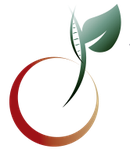Proceedings of International Congress on Bioactive Compounds and International Workshop on Bioactive Compounds
Proceedings of 1st International Congress on Bioactive Compounds and 2nd International Workshop on Bioactive Compounds - Vol. 1 - 2018
EVALUATION OF MUTAGENICITY AND ANTIMUTAGENICITY OF THE CAROTENOID-ENRICHED EXTRACT FROM CASHEW (ANACARDIUM OCCIDENTALE L.) BYPRODUCTS THROUGH “IN VIVO” MICRONUCLEUS ASSAY
Como citar esse trabalho?
Para citar este trabalho use um dos padrões abaixo:
Como citar esse trabalho?
Introduction: The carotenoid-enriched extract (CEE) was developed by EMBRAPA-Fortaleza and CIRAD/France from the peduncle fibers of the cashew. CEE presents an intense yellow color with great potential as a dye in the food, pharmaceutical and cosmetic industries. More, this yellow color was attributed to at least 11 different carotenoids been beta-cryptoxanthin and auroxanthin the main compounds. So, in addition to providing color, this extract can also have beneficial actions in the organism. The objective of the present study was to evaluate the mutagenic and antimutagenic activities of the CEE through the in vivo mammalian erythrocyte micronucleus test (guideline 474, OECD). Method: The CEE was prepared by Embrapa Tropical Agroindustry using Embrapa CCP-76 cashew peduncle grown in the experimental field in Pacajus - CE, Brazil. The Ethics Committee on the Animals Use at the University of Campinas approved the in vivo mammalian erythrocyte micronucleus assay (protocol no. 4345-1). Female Unib:SW adult mice (25-30 g body weight, n = 10 animals/group) were randomly distributed in to experimental groups (G 1 - 4) which were orally treated during 30 days, with decreasing doses (500, 100 and 50 mg/Kg, G 1 – 3) of CEE or vehicle (PBS buffer with 2% of Tween 80, 10 mL/Kg, G 4, control group). The higher dose of CEE (500mg/Kg) was estimated using the guide no. 129 of the Organization for Economic Co-operation and Development (OECD, 2010). On the day 29, half of the animals in each group (n = 5 animals/group) were treated intraperitoneally (i.p.) with cyclophosphamide (micronucleus inducer, 50 mg/kg). Twenty-four hours after this treatment, all animals were euthanized by deepening anesthesia with ketamine/xilasin followed by cervical dislocation. The femurs were removed for bone marrow collection using fetal bovine serum as vehicle. The collected material was processed for preparation of the slides (three slides/femur). After staining with Giemsa, the slides was evaluated under optical microscopy for counting the micronucleated immature erythrocytes in a population of 4000 immature erythrocytes per animal, (OECD 474, 2014). Statistical analysis was performed using ANOVA followed by Tukey test (p < 0.05 for significance). Results: The CEE did not induce an increase in micronucleus counts and was not able to prevent an increase on cyclophosphamide-induced micronucleated immature erythrocytes. Discussion: The antioxidant actions of the carotenoids have already been reported besides with the warning of proinflammatory effects attributed to antioxidant substances. In our analysis, we observed that the CEE did not present mutagenic activity; however, the carotenoids presents in CEE were not able to prevent cyclophosphamide mutagenic effect. Conclusion: The CEE obtained from cashew apple fibrous residues showed no mutagenic activity at the administered doses, pointing for a safe use as industrial dye.
- 1 Universidade Estadual de Campinas
- 2 Embrapa Agroindústria Tropical / Bolsista produtividade CNPq / EMBRAPA
- 3 Faculdade de Ciências Farmacêuticas / Universidade Estadual de Campinas
Discussões Científicas de Qualidade
Com ~200 mil publicações revisadas por pesquisadores do mundo todo, o Galoá impulsiona cientistas na descoberta de pesquisas de ponta por meio de nossa plataforma indexada.
Confira nossos produtos e como podemos ajudá-lo a dar mais alcance para sua pesquisa:
Como citar esse proceedings?
Esse proceedings é identificado por um DOI , para usar em citações ou referências bibliográficas. Atenção: este não é um DOI para o jornal e, como tal, não pode ser usado em Lattes para identificar um trabalho específico.
Verifique o link "Como citar" na página do trabalho, para ver como citar corretamente o artigo

